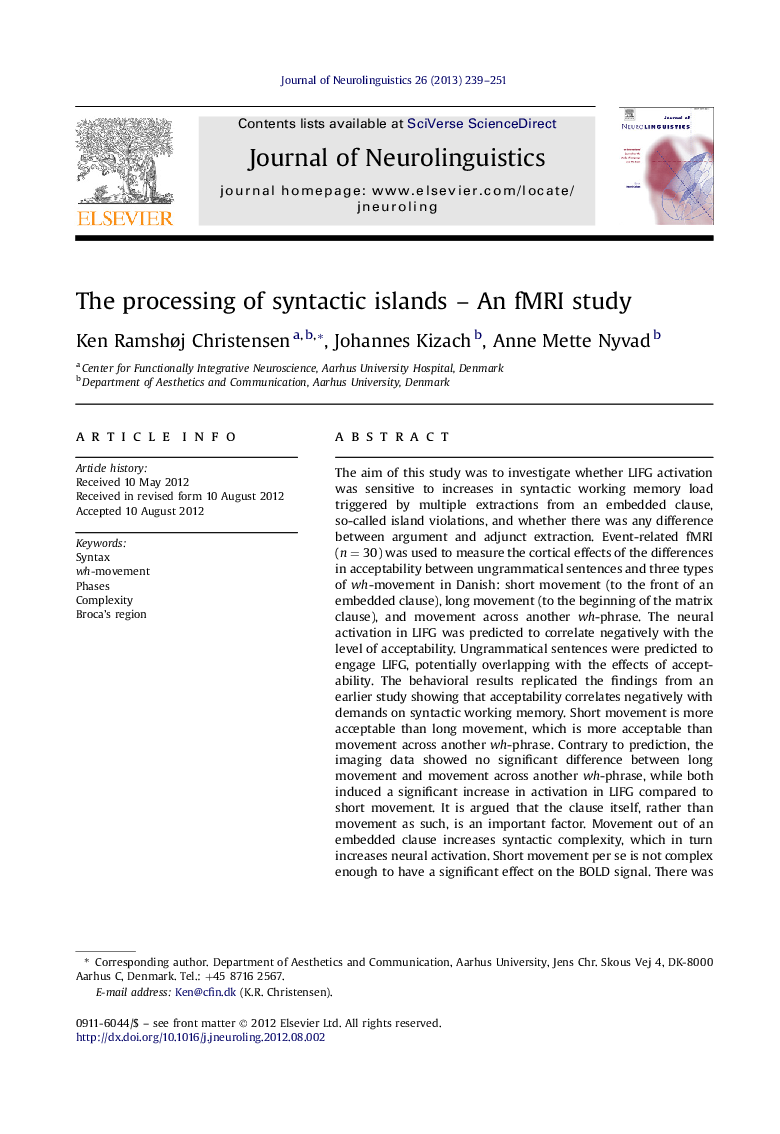| کد مقاله | کد نشریه | سال انتشار | مقاله انگلیسی | نسخه تمام متن |
|---|---|---|---|---|
| 911851 | 918094 | 2013 | 13 صفحه PDF | دانلود رایگان |

The aim of this study was to investigate whether LIFG activation was sensitive to increases in syntactic working memory load triggered by multiple extractions from an embedded clause, so-called island violations, and whether there was any difference between argument and adjunct extraction. Event-related fMRI (n = 30) was used to measure the cortical effects of the differences in acceptability between ungrammatical sentences and three types of wh-movement in Danish: short movement (to the front of an embedded clause), long movement (to the beginning of the matrix clause), and movement across another wh-phrase. The neural activation in LIFG was predicted to correlate negatively with the level of acceptability. Ungrammatical sentences were predicted to engage LIFG, potentially overlapping with the effects of acceptability. The behavioral results replicated the findings from an earlier study showing that acceptability correlates negatively with demands on syntactic working memory. Short movement is more acceptable than long movement, which is more acceptable than movement across another wh-phrase. Contrary to prediction, the imaging data showed no significant difference between long movement and movement across another wh-phrase, while both induced a significant increase in activation in LIFG compared to short movement. It is argued that the clause itself, rather than movement as such, is an important factor. Movement out of an embedded clause increases syntactic complexity, which in turn increases neural activation. Short movement per se is not complex enough to have a significant effect on the BOLD signal. There was no effect of ungrammaticality, but this absence is argued to be due to the nature of the anomaly. The activation in LIFG correlated with the crossing of a clause boundary, not with increases in working memory load or decreases in acceptability due to island violations.
Figure optionsDownload as PowerPoint slideHighlights
► Long movement is degraded but more acceptable than island violations.
► Movement across a clause boundary engages left frontal, temporal, and dorsal regions.
► Short movement in itself is not complex enough to increase neural activation.
► Non-hierarchical syntactic violations do not increase neural activation.
Journal: Journal of Neurolinguistics - Volume 26, Issue 2, March 2013, Pages 239–251